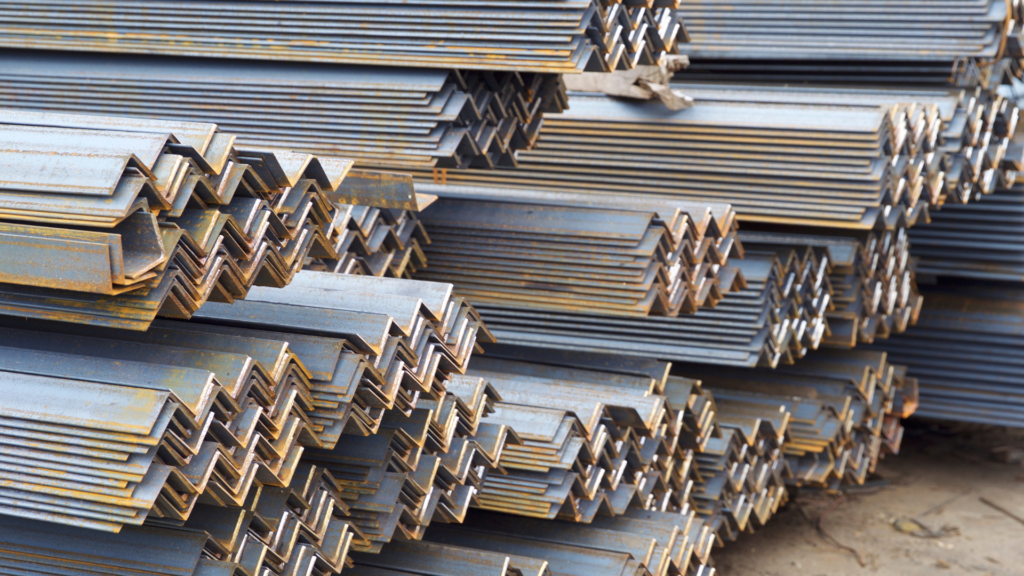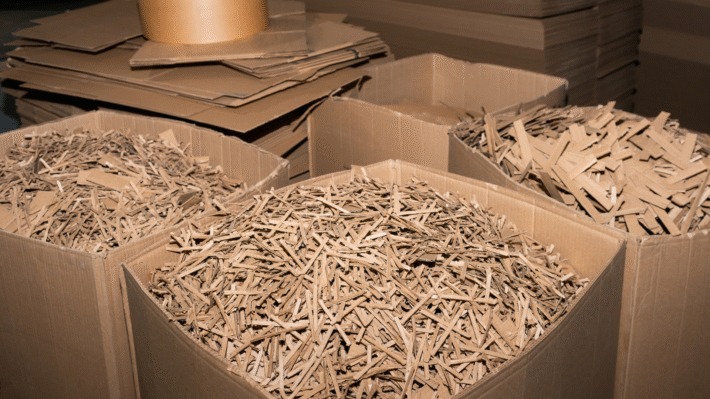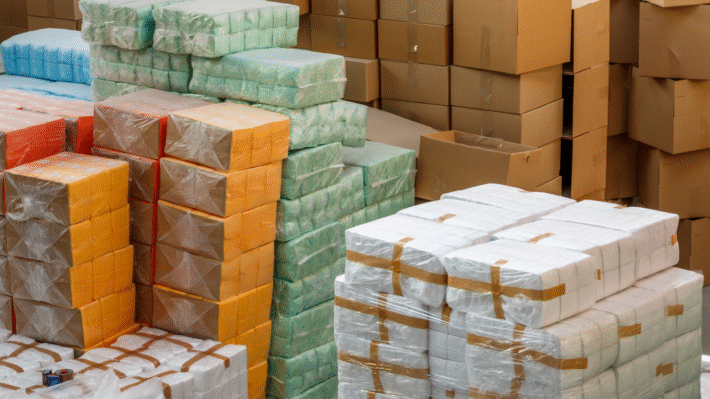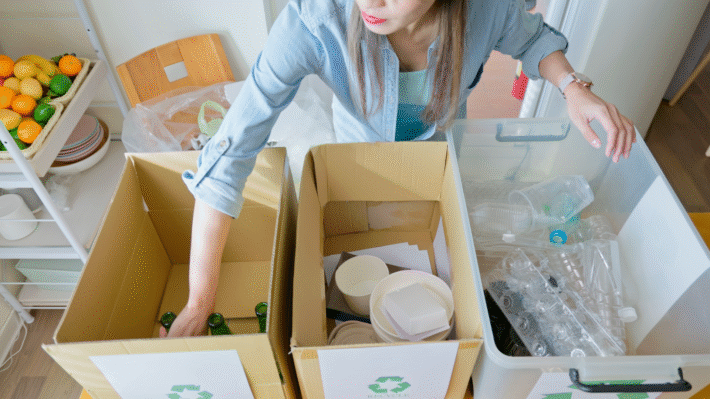Uncover the Powerful Impact of Metal Recycling on Our Resource Conservation and Energy Usage

Hello, earth heroes! Today, we’re talking about something excitingly progressive and environmentally significant – Metal Recycling! Ever wondered what happens to old, discarded metal products? They’re not just waste; they’re actually gold mines (or, more accurately, metal mines)! Collecting and processing scrap metal into new products creates a chain reaction that conserves our precious metal resources and dramatically reduces energy consumption compared to the production process of new metals. And the best part – it’s something that everyone, from big industries to individuals, can participate in! So, buckle up and get ready to dive deep into the marvels of metal recycling. What we are about to unfold is nothing less than a revolution toward a sustainable future.
Types of Scrap Metal
Scrap metal, folks, it’s a gold mine in disguise. When we say “scrap metal”, we are referring to two basic categories. Yep, you guessed it, ferrous and non-ferrous. But what does that even mean? Well, you’re about to find out.
Ferrous Metals
Buckle up! We start off with ferrous metals. The big kids on the block: Steel, cast iron, and wrought iron. Oh yes, they’re the unsung heroes of our modern world. Let’s get into a little more details.
Steel
Steel is by far the most recycled material worldwide. And why wouldn’t it be? Its strengths like durability and ability to be magnetically separated from waste stream makes it an easy pick for recyclers. From your old car to that unused refrigerator, steel is everywhere. Every scrap of steel recycled saves just a bit of our precious iron ore, coal, and energy. Boy, Mother Earth must be very happy.
Cast Iron and Wrought Iron
When we mention ferrous metals, we can’t leave out cast iron and wrought iron. These two differ from steel, mainly in terms of carbon content. But, just like steel, cast iron, and wrought iron also enjoy the privilege of being highly recyclable. So, that old cast iron skillet your grandma gave you might just end up in a new building one day!
Non-Ferrous Metals
Now onto non-ferrous metals. They might sound less important, but trust me, they’re far from it. These include metals like aluminum, copper, and the likes. Non-ferrous metals may not be as abundant as their ferrous cousins, but boy, do they pack a punch when it comes to value.
Aluminum and Copper
Starting with Aluminum and Copper, these metals are in your everyday items from soda cans to pennies. These metals are not just recyclable, they’re exceedingly energy efficient when recycled. Now that’s a jackpot for anyone looking to save on energy while making some greenbacks.
Brass, Lead, and Zinc
Moving on, let’s talk about Brass, Lead, and Zinc. These metals are sort of like the quiet ones in class that surprise you with their results. They might not be as prominent as aluminum or copper, but they sure are valuable. And yes, you got it right, they’re recyclable too!
Nickel, Tin, and Titanium
Last but not least, there are Nickel, Tin, and Titanium. These metals, often used for specialty applications, are also a part of our recycling fam. They might not appear much in your daily life, but in industries like aerospace, medical, and many others, they’re no less than superstars.
And that, my friend, is a crash course in the types of scrap metals. So next time you hear “scrap metal”, remember, it’s not just junk, it’s a treasure chest of resources waiting to be reused. Talk about a green revolution, right?
Sources of Scrap Metal
Metal is everywhere! In our homes, at work, even as we commute, it is an inescapable part of modern life. When these metals reach their end of life, they become a rich source for scrap metal. So, where does all of this scrap come from? Let’s get an inside look at the various sources of scrap metal.
Industrial Sources
Manufacturing Waste
One of the primary sources of scrap metal is manufacturing waste. You see, in the process of creating engines, frames, and a multitude of other parts, there’s a significant amount of metal left over. This leftover, called cut-offs or swarfs, is collected and sent for recycling. This especially happens in industries like automobile manufacturing, construction, and electronics production. They generate loads of steel, aluminum, and copper waste, which have a high recycling value.
Demolition and Shipbreaking
When older buildings, bridges, and other infrastructures are pulled down or refurnished, a huge amount of scrap metal is produced. This is particularly true for demolition and shipbreaking works. Ships, particularly old steel ships, contain an impressive amount of recyclable metals. When their seafaring days are over, they are broken down, and the metal is harvested for recycling. Similar is the case with any building or structure made extensively of metal.
Domestic and Commercial Sources
Household Appliances and E-Waste
Cast a look at your home, and you’ll see it is a goldmine for scrap metal. Your household appliances, like your fridge, cooker, microwave, washing machine, even small electronics contain a good amount of metal – from their exterior bodies to interior components. When these appliances stop working or are replaced with newer models, they become a source of scrap metal.
Furthermore, e-waste, such as old mobile phones, computers, and TVs, contain a variety of precious metals like gold, silver, and platinum. The rapid rate of technology change and product obsolescence in the electronics industry means that a significant amount of e-waste is generated every year, a lot of which ends up for recycling.
Vehicles and Infrastructure
Ever wondered what happens to your car, bike, or bus when they are too old to vroom? They are often sold to scrapyards where valuable metals like steel, iron, aluminum, copper, and brass are extracted. These end-of-life vehicles contribute a significant portion of the overall scrap metal pool.
Moreover, public infrastructure like light poles, railway tracks, fallen powerlines, etc., once no longer in use or needing replacement, are also excellent sources of scrap metal.
In all, these sources provide a steady stream of scrap metal, feeding a never ending cycle of recycling, reducing our need for mining fresh ores, conserving resources, and saving energy in the process.
The Recycling Process
When you toss your old soda can, used car battery, or even your grandma’s antique silverware into a recycling bin, do you ever wonder where it goes, or what happens to it? Well, it begins a miraculous journey of transformation. The old, discarded metal is whisked away, given a new life, and turned into something shiny and new. And that, my friends, is where our tale begins!
Collection Methods
Collection Points and Curbside Pickup
Whoosh! Off goes your soda can, now empty and discarded, into the blue recycle bin on the curbside. That’s where so much of the magic starts. Cities across the globe have understood the importance of recycling and have made it easy for you to participate. Many towns and cities offer curbside pickup where your recycling bin is emptied right along with your trash.
In addition to curbside pickups, there’s a web of collection points. These include recycling centers, scrap metal yards, or drop-off locations at various sites such as shopping centers. Some places, like California, even pay you to recycle. By taking your cans and bottles to a certified recycling center, you can earn back the California Refund Value (CRV) that you paid when you purchased your drinks.
Industrial Collection
At industrial sites, especially metal processing and manufacturing centers, there’s usually an abundance of scrap metal, which is collected, sorted, and sent to be recycled. These industries have a different set of collection methods in place, such as dumpster rental or scrap buying services. Efficient metal recycling can significantly reduce the costs of primary metal production and lessen the environmental impact.
Sorting Techniques
Manual and Magnetic Sorting
So, now we’ve gathered up all our scrap metal. What’s next? Sorting! This is where we separate the pack. Big metal goes here, little metal goes there. Iron, steel, and other ferrous metals? They’re magnetically attracted and easily separated from the rest using powerful overhead or hand-held magnets. Not so magnetic metals, like copper, aluminum, brass and zinc, won’t stick to the magnet and are sorted manually.
Density-Based Sorting
Now comes the science part! Some metals, because of their weight or density, can be sorted using shaking tables or water flotation systems. Imagine a big, wobbly table that shakes the heavier metal one way, and the lighter metal another. Pretty cool, huh?
Processing and Refining
Shredding and Melting
Once the metals are sorted, they’re ready for the next stage: shredding! Metal shredders are a sight to behold. They turn cars, fridges, and entire bicycles into tiny metal pieces in just seconds. These tiny metal pieces are then melted in an enormous furnace, and–voila!–out comes a liquid that hardens into a fresh batch of metal.
Purification and Refining
But wait! Not so fast. This liquid concoction is hot, sure, but it’s not pure yet. Going through a refining process, the molten metal is purified, and extraneous materials are filtered out. So, what comes out is a high-quality, usable metal, free from any impurities or unwanted elements.
Distribution of Recycled Metals
The final step? Rolling or casting the purified metal into shapes such as sheets or ingots, so they can be easily transported and used for manufacturing new products.
And there you have it! Your recycled metal completes its rebirth, starting as a humble scrap, and ending as a shiny, new, reusable resource, all thanks to the magic of the metal recycling process. So next time you toss that soda can into the recycling bin, remember, you’re a vital part of this amazing journey.
Benefits of Metal Recycling
From empty soda cans to discarded car parts, metal recycling is an environmentally-friendly act that offers numerous benefits. We are not merely throwing away trash; we are helping to breathe new life into discarded materials. Let’s explore the environmental and economic advantages of recycling metal.
Environmental Advantages
We’ve known for a long time that Mother Earth’s resources are not limitless. Hence, recycling offers us an opportunity to sustain these precious resources.
Reduced Mining and Energy Consumption
Every time we recycle stashed aluminum in our garage or discarded copper wires from electrical devices, we contribute towards reducing the need for mining fresh metal ores. This helps protect natural landscapes that might otherwise be destroyed by extensive mining activities. In addition, it saves energy. The amount of energy saved by recycling just one aluminum drink can is enough to power a television for three hours!
Lower Emissions and Landfill Usage
Recycling metals generates fewer greenhouse gas emissions compared to extracting new metals. For instance, producing recycled steel releases 80% fewer carbon dioxide emissions compared to manufacturing steel from virgin materials. Furthermore, recycling also aids in reducing landfill usage, as metals — unlike organic materials — do not decompose and can occupy landfill space indefinitely.
Economic Benefits
Putting green credits aside, metal recycling serves as a pillar for economic growth. It is a profitable business that drives numerous job opportunities.
Job Creation and Cost Savings
From collection to transportation and processing, the U.S metal recycling industry employs over 500,000 workers and contributes about $105 billion to the nation’s Gross Domestic Product. Besides, the cost savings realized from using recycled materials instead of virgin ones often trickle down to consumers, making goods more affordable.
Revenue from Recycled Materials
Scrap metal isn’t just waste – it’s potential revenue! Selling discarded copper pipes, aluminum siding, or lead weights not only cleans up the environment but also puts cash into your pocket. Every ton of steel recycled amounts to approximately $300, making recycling not only advantageous for its eco-benefit but also for its financial gain.
In conclusion, the benefits of recycling metals undoubtedly echo the words of Naturalist John Muir, “When one tugs at a single thing in nature, he finds it attached to the rest of the world.” Together, by understanding and practicing metal recycling, we can protect our planet, conserve resources, and boost the economy.
Challenges in Metal Recycling
Like any industry, metal recycling also faces its share of challenges. From contamination to embracing technological innovations, let’s delve into the hurdles that need to be overcome for successful and sustainable metal recycling.
Contamination Issues
A major roadblock in the path of effective metal recycling is contamination. This issue typically occurs when other materials mix up with the metals in the recycling chain. For example, the presence of plastic, glass, or even different types of metals can lead to significant complications during the processing and refining stages. Staying vigilant about the potential sources of contamination and putting measures in place to minimize it can significantly enhance the proficiency of the metal recycling process[^1^].
Technological and Market Challenges
In a rapidly evolving world, technology advancements are at heart of every industry, and metal recycling is no exception. Finding innovative ways to collect, sort, and process scrap metal requires a commitment to investing in new technologies. However, these investments can be substantial and might not always align with market demands or the price fluctuations in the scrap metal market[^2^].
Raising Awareness and Innovations
Advanced Sorting Technologies
The increasing use of advanced technologies like AI and machine learning is set to revolutionize the way scrap metals are sorted[^3^]. Innovations in this area could help improve efficiency, reduce mistakes from manual sorting, and ultimately make the metal recycling industry more profitable.
Circular Economy Approaches
Another innovative approach is the adoption of circular economy principles. Rather than the traditional make-use-dispose linear economy, a circular economy aims to keep resources in use for as long as possible, extract the maximum value from them and then recover and regenerate products and materials at the end of their service life[^4^]. In the context of metal recycling, this means designing products to be more easily recyclable, improving collection and recycling infrastructures, and using recycled materials in manufacturing whenever possible.
[^1^]: Stainless Steel World News, [The challenges of recycling stainless steel] (https://www.stainless-steel-world.net/news/88248/the-challenges-of-recycling-stainless-steel.html) [^2^]: Waste360, Demystifying Metals Recycling [^3^]: Recycling Today, AI technology advancing in recycling applications [^4^]: The Guardian, The Guide to the Circular Economy
Consumer Role in Metal Recycling
When it comes to the vast world of metal recycling, we often consider it the responsibility of industries and governmental bodies. However, as consumers, we possess an incredible capacity to influence the success of these recycling programs. Why? Well, because we generate majority of the waste, that’s why! So, how can we participate and encourage a more sustainable future?
Proper Disposal of Scrap Metals
We all are friendly with the ordinary household items that contain recyclable metals. Be it the soda cans, old appliances, or an abandoned car, they all harbor metals that could be given a new life. The trick lies with us, the consumers, to ensure these items don’t end up in the ordinary waste.
Proper disposal of such items often involves reaching out to your local waste facility and getting information about the pick-up programs available. Many facilities offer special pick-up for large appliances and scrap metal items. For smaller items, such as soda cans or food tins, using your recycling bin correctly makes all the difference.
Supporting Recycled Products
Once these metals have been melted down, purified, and re-enter the production chain, they pop up in our local markets as recycled goods. Here again, consumers play a key role. By actively choosing and purchasing products made from recycled materials, you boost the demand for these items. This sends a message to manufacturers that recycled metals are as valuable as freshly mined ones, a crucial step towards sustainability.
Advocacy and Community Involvement
And there’s one last important role that we as consumers can play – become advocates for recycling. Spreading awareness among our family, friends, and community about the value of metal recycling can have a domino effect. By showing our own dedication to recycling and educating others on how to properly dispose of scrap metals, we can promote a recycling culture.
Get involved in local recycling drives or organize one yourself. Write to your local representatives about enforcing stricter recycling regulations. Every bit helps.
In conclusion, the role of consumers in metal recycling is undeniable and essential for a greener future. Everyone has the power to impact the recycling process and benefit the planet. Let’s use that power and do our bit to conserve our valuable metal resources and reduce energy consumption.
2 Comments
Comments are closed.




[…] means using fewer new materials. When we choose items made from recycled materials, like glass or metal, we help save resources. Imagine turning old bottles into beautiful vases or chairs! This keeps […]
[…] strong materials is important. These panels are made from things like bio-composites and recycled metals. They last a long time. This means less waste, and you can use them over and over. It saves money, […]